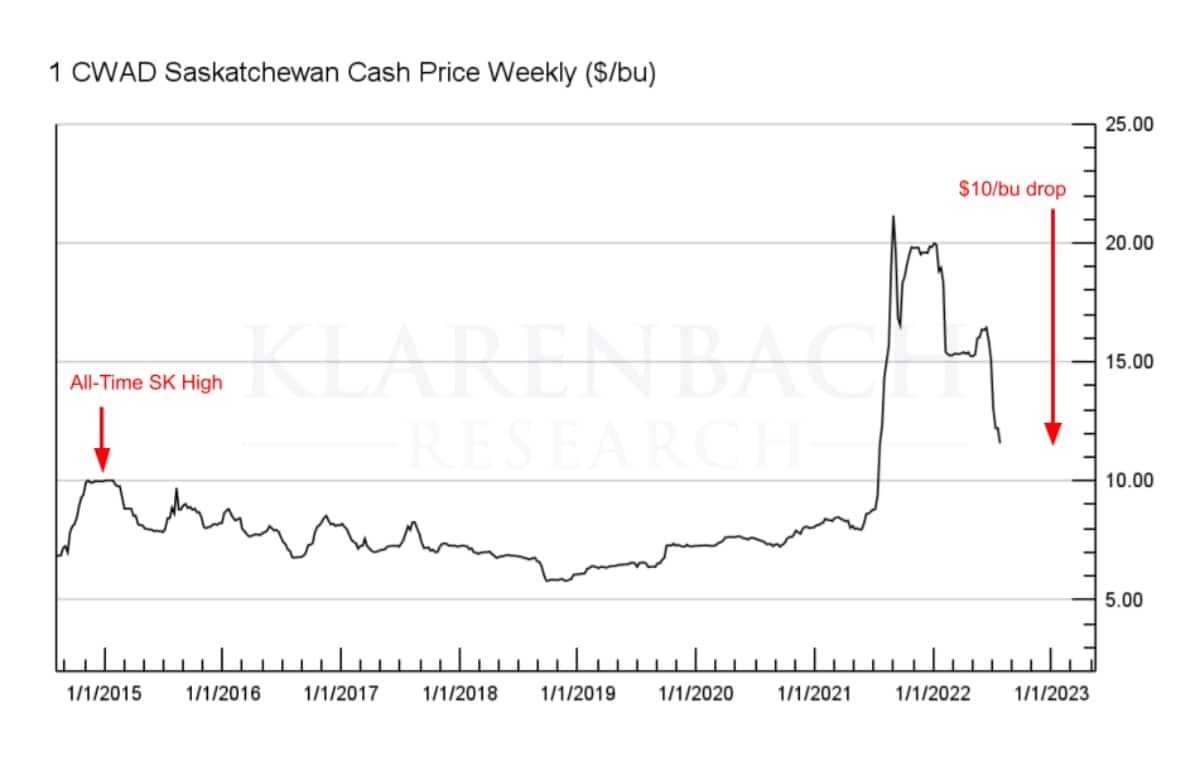The Klarenbach Report, Aug 9
“I am not selling Durum until the price returns to $22 per bushel.”
It was January. I was having a conversation with a Durum grower.
The ‘fundamentals’ were still bullish with supply levels dropping and the new Durum harvest months away.
Every man, woman, child and dog was bullish Durum wheat prices.
“The price will return to the highs.”
It was an expectation.
Meanwhile, the parabolic move from July had experienced a correction and showed signs of exhaustion.
The price of Durum wheat was below the market high; however, the grower had anchored his price expectations to that level.
The Investopedia website provides the following anchoring definition:
“Anchoring is a cognitive bias in which the use of an arbitrary benchmark such as a purchase price or sticker price carries a disproportionately high weight in one’s decision-making process; as described by Investopedia.”
The Durum grower’s anchoring bias results in holding the commodity that has lost value as they have anchored their price target to the recent high price rather than follow the technicals.
As the price continues lower, the grower is likely to experience many emotions, including complacency, anxiety, denial, panic, anger and eventually depression.
Anchoring bias occurs with all market participants, including those in the stock, commodity, and housing markets.
In the case of the Durum market, the post-CWB high price was approximately $10 per bushel in the 2014-15 crop year.
This past week, some growers were selling old crop Durum for $12.50 per bushel.
This selling price is $10 per bushel below the market peak giving back the equivalent of the 2014-15 high.
The ramifications can be expensive.
Before we chastise the grower, consider that we all experience anchoring bias in our lives.
I struggle with anchoring bias.
Do you?
Trent Klarenbach, BSA AgEc, publishes the Klarenbach Grain Report and the Klarenbach Special Crops Report, which can be read at https://www.klarenbach.ca/

